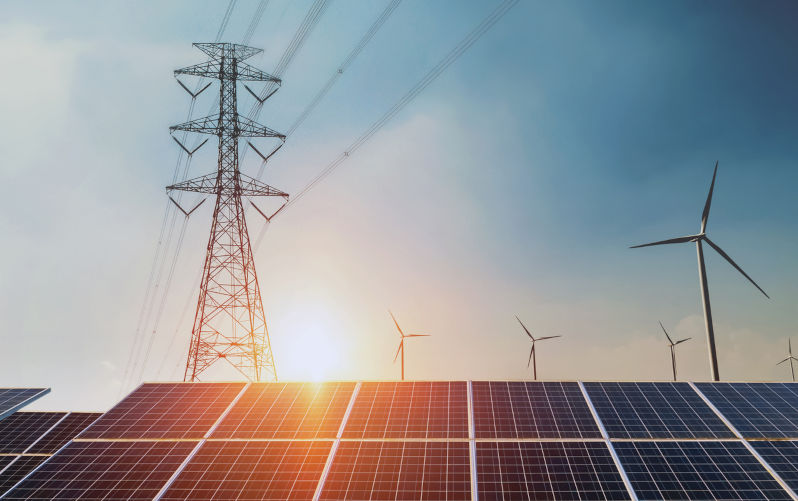South Australias world-leading renewable transition is attracting flood of new industry
March 23, 2024
Will a grid based around wind and solar kill manufacturing and industry? Its what the naysayers the Coalition and conservative agitators want you to believe, but the experience in South Australia, which leads the world in the uptake of wind and solar, proves the opposite.
The states transmission operator ElectraNet says wind and solar has accounted for a world-leading 75 per cent share of local demand in the last 12 months, and the accelerated target of net 100 per cent renewables by 2027 is attracting interest from new industry.
As we enter the next phase of the energy transformation, South Australia is now seeing a level of interest from new, large electricity loads not seen for a very long time, ElectraNet CEO Simon Emms says.
Interest in new load connections currently exceeds 2,000 MW, driven by electrification and green re-industrialisation of the economy as loads seek access South Australias clean energy.
This interest in new loads is coming from industries such as green steel, mining, desalination, hydrogen and other energy-intensive operations such as data centres. Much of it will be based in regional areas, and at least 1,000 MW of new load is expected by 2030, nearly doubling the states average load.
The assessment by Emms and ElectraNet is particularly interesting given that the former Coalition leader Tony Abbott had predicted that the South Australia steel city of Whyalla would be wiped out by the proposed carbon price and the switch to green energy.
The Coalitions current leader Peter Dutton and his energy spokesman Ted OBrien repeatedly insist that the lights will go out with a high level of renewables, and will be the death of industry and the modern economy.
South Australia, despite its lack of any long duration storage such as pumped hydro, is living proof that the federal Coalitions stance is a complete nonsense.
The future of the Whyalla steelworks now depends on a switch to green iron and green steel, something it is well placed to do given the nature of the states iron ore reserves which is magnetite and lends itself to new electric processes in steel making and its abundant wind and solar resources.
The state Labor government is seeking to fast track the energy transition, recently announcing that its target of net 100 per cent renewables actually set by the previous state Liberal government has been accelerated from 2030 to 2027.
The government is also spending around $600 million building a 250 MW electrolyser and a 200 MW green hydrogen power plant that will both likely be the biggest of their type in the world, and add to the anticipated new load.
ElectraNet says that there is already more than 3,000 MW of large-scale wind and solar generation connected to the states network, and rooftop PV capacity has increased threefold to 2,200 MW over the last six years.
Those numbers are expected to grow again, and are being supported by an increasing number of big battery projects, with four already completed, two going through commissioning, two more under construction (which will be the biggest in the state), and many more in the pipeline.
ElectraNet says it has already added 1,000kms of new transmission lines, including its share of the new high voltage link to NSW, Project EnergyConnect, and an upgraded link to the Eyre Peninsula.
Its newly released transmission plan identifies a number of new transmission proposals, including the mid-north expansion to boost the backbone of the network, and new lines in the south-east and another upgrade on the Eyre Peninsula.
The document notes that the last coal plant in South Australia closed in 2016 and the share in output of gas generation continues to fall. And the state has no material hydroelectricity, pumped storage hydro or nuclear power, and it remains weakly interconnected with the rest of the National Electricity Market (NEM).
That, however, is creating challenges with periods of high renewable output followed by periods of very low output, and periods of negative demand where rooftop solar accounts for all the power demand in the state.
As a result, the state has become a leader in the orchestration of rooftop solar, the installation of big batteries, rollout of virtual power plants, and using battery inverters to provide key system services such frequency control, inertia and system strength.
ElectraNet warns, however, that its network is old and stringy, with more than 40 per cent of its transmission towers and 30 per cent of its conductors already beyond their standard asset life and requiring increased maintenance, and the state has the longest network per unit of peak demand in the NEM.
That extensive network over a small population explains the relatively high retail electricity costs in the state. Simms says, however, that its new transmission projects will help reduce the unit costs of electricity.
Our analysis shows that the major transmission investment required to serve the expected increase in demand results in average unit cost falling due to costs being shared over a wider customer base, he said.
A range of further actions will be required to manage the energy transition including system services and emergency control schemes and uplift in systems and capabilities.
The document did not provide details of the proposed costs and benefit analysis of the new projects these will came at a later stage as it enters the detailed regulatory assessment process.
Republished from Renew Economy, March 21, 2024
